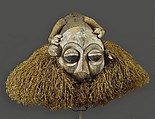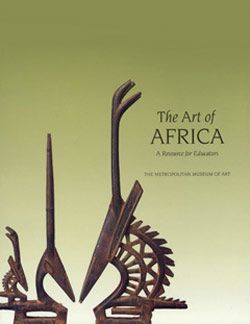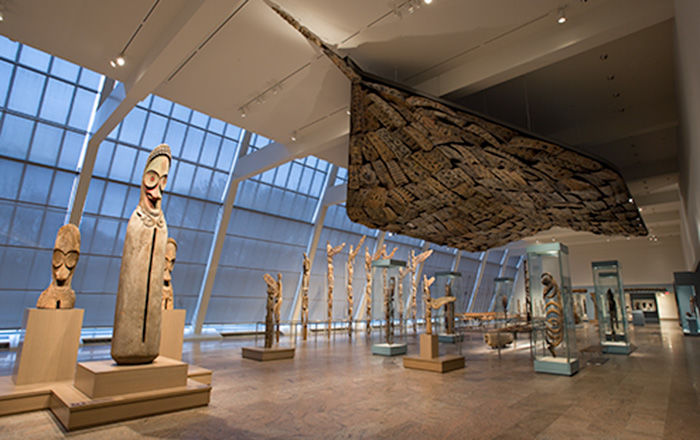N-kisyan-khanda (initiation headdress)
Yaka artist and nkanda initiate
The dancing of masks wreathed in raffia celebrated the end of nkanda, a months-long initiation course marking a boy’s transition to manhood. This new life stage presented several unknowns, including sexual contact with women and the possibility of infertility. In consultation with a sculptor, each boy created a headdress as a protective charm to shield him through this transitory period. The imagery emphasized the differences between men and women. The animal-human hybrid that crowns this mask may have alluded to mythical narratives of male leaders who could transform themselves into animals at night. Initiates typically served as supporting characters to the performance of a n’langala, a senior nkanda member. He wore a kholuka mask depicting overtly sexual scenes of copulation and masturbation.
This image cannot be enlarged, viewed at full screen, or downloaded.


